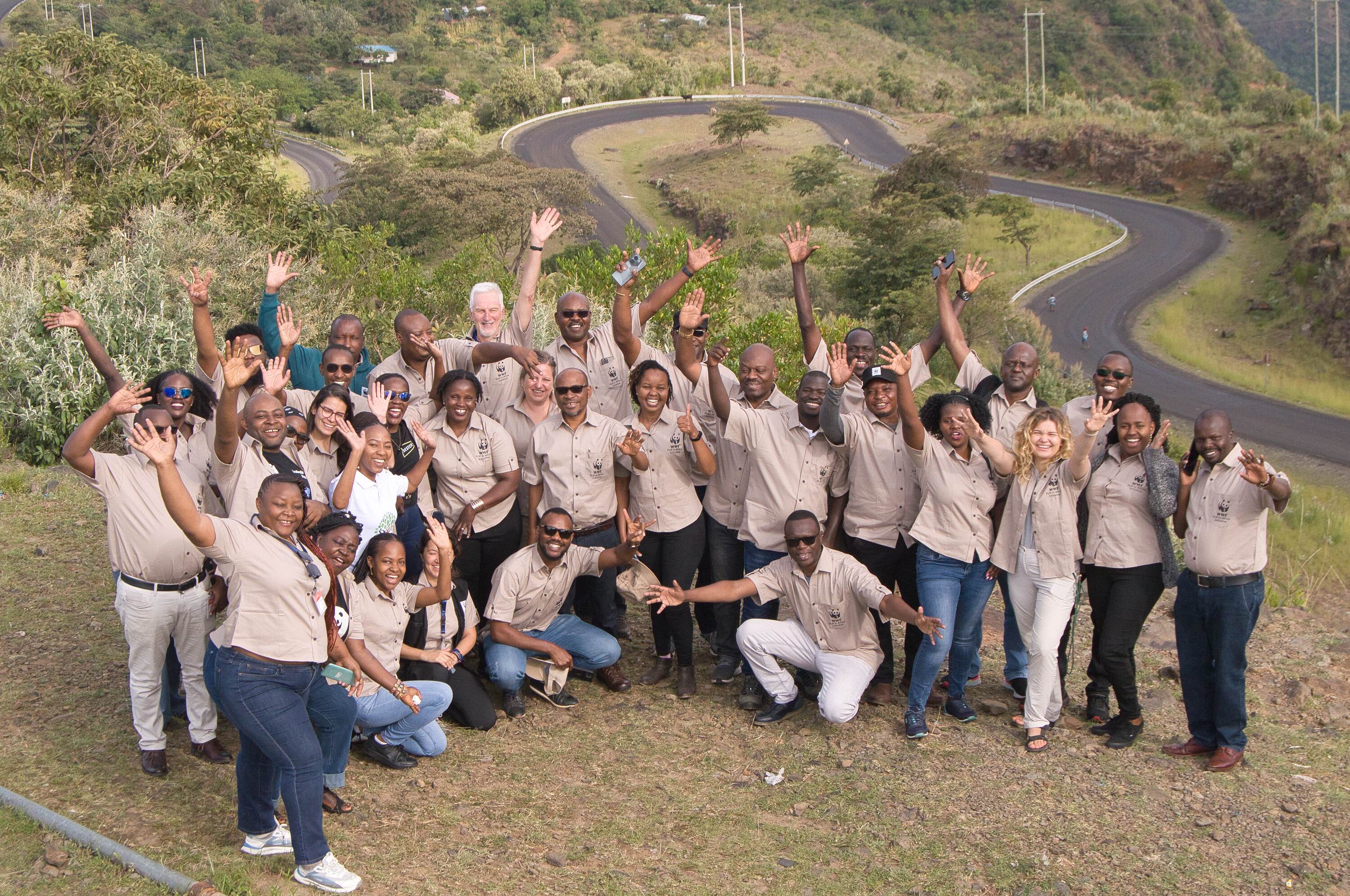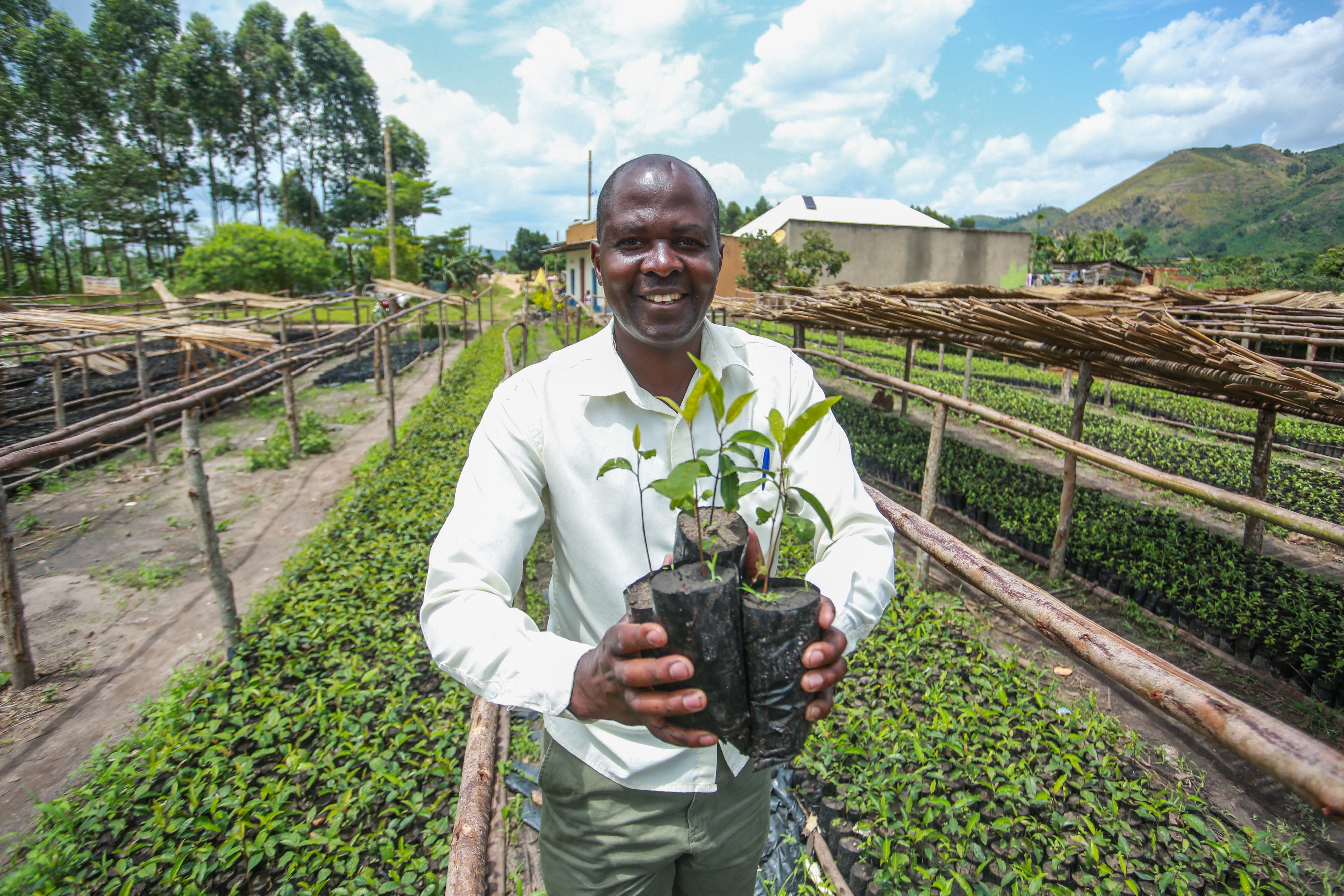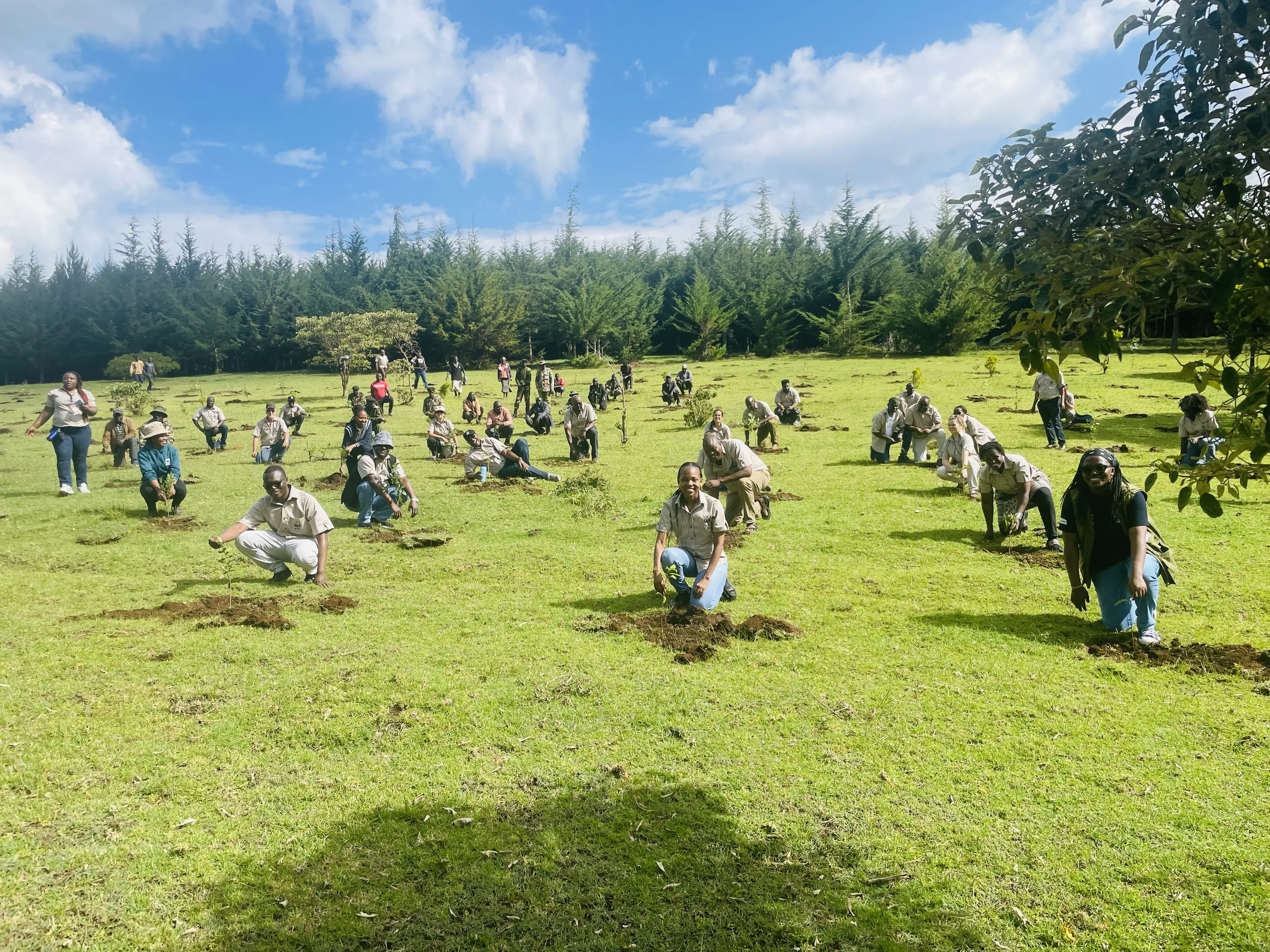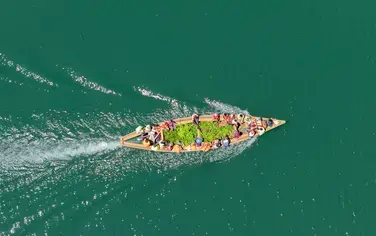WWF's Forest Landscape Restoration in Africa
The UN has declared 2021-2030 the Decade on Ecosystem Restoration. In Africa, 34 countries have so far pledged to bring 129.5 million hectares under restoration by 2030 as part of AFR100. Now is the time to speed up action on these commitments and scale up implementation.
This is where we want to help. WWF’s Forest Landscape Restoration in Africa initiative is an ambitious multi-country effort that aims to kick start the restoration of 13.5 million hectares of degraded and deforested landscapes across nine countries by 2027 as our contribution to AFR100.
The initiative coordinates with a wide range of partners, from national governments and private sector companies to Indigenous peoples and local communities, as well as working closely with AUDA-NEPAD, the AFR100 Secretariat. While we’re actively involved in landscape restoration work on the ground, this isn’t just about individual conservation projects: it’s about putting in place the conditions – from government policies to financial mechanisms, business models to community capacity – that will enable forest landscape restoration on a scale never seen before.
Lead, Forest Landscape Restoration in Africa
Tanzania

With over 11,000 species of plants, Tanzania is ranked third among countries in Africa for high plant diversity. It is also home to diverse types of birds, including 56 species of global conservation concern, and over 360 species of reptiles and amphibians - with 99 of them unique to the region. Their coastal waters feature abundant fish and hard corals.
Tanzania has the Eastern Arc Mountains and Coastal East Africa Forests, vital habitats for flora and fauna, and the Kilombero Valley Ramsar Site supports rice farming that meets 60% of the country's rice needs. The country’s major rivers serve hydropower, wildlife, and agriculture.
Despite the significance of its natural resources, Tanzania still grapples with deforestation and forest degradation. In response, WWF Tanzania is prioritizing intervention in the Water Tower and Ruvuma Landscapes, aiming to restore 2.6 million hectares of forest. This aligns with the country’s commitment to restore 5.2 million hectares nationwide.
Cameroon
Democratic Republic of the Congo
The Democratic Republic of Congo (DRC) is a biodiversity powerhouse in Africa, with more than 11,000 plant species, 480 mammal species -about half of Africa's total -, and several birds and reptiles. Among these are unique and endemic creatures like the okapi, the Congo peacock, and the bonobo.
Covering over 150 million hectares, the DRC's forests represent 60% of the Congo Basin's forests, the world's second-largest tropical forest block. These forests are vital for supporting livelihoods and regulating the global climate. However, they face threats like slash-and-burn agriculture, unregulated hunting, artisanal mining, and wood harvesting for charcoal production.
To combat these threats, the DRC has committed to restoring 8 million hectares of forest by 2030. WWF has been actively involved in capacity-building, advocating for community rights in forest management, and supporting sustainable practices in the DRC for nearly two decades. Despite provincial-level forest landscape restoration (FLR) initiatives, the lack of comprehensive data hinders the quantification of their impact. To address this, WWF plans to assist the Ministry of Environment and Sustainable Development in establishing a monitoring and evaluation system at the national level, aiming to better track and assess FLR efforts and their contributions to meeting national commitments.
Kenya

Kenya is renowned as the "cradle of humanity," with the Great Rift Valley yielding evidence of early human ancestors. It has diverse ecosystems encompassing rangelands, forests, freshwater, and marine areas including mangroves. Remarkably, about 65% of Kenya's renowned wildlife exists outside protected areas, thriving in private and community wildlife conservancies.
Kenya boasts five significant water towers, notably the Mau Forest Complex, crucial for supporting livelihoods locally and internationally. The Mau Forest serves as a catchment area for major rivers and lakes, sustaining ecosystems like the Maasai Mara and Serengeti National Reserves. Despite its ecological significance, unsustainable land and water management practices contribute to biodiversity loss and water scarcity.
The national government pledged to double the AFR100 goal, aiming to restore and conserve 10.6 million hectares of degraded landscapes through growing 15 billion trees by 2032. This will raise Kenya's forest cover to 30%. WWF-Kenya is actively involved, committing to restore 2.25 million hectares and engaging in forest landscape restoration projects across various landscapes.
Madagascar
Madagascar has nearly 10 million hectares of diverse forests. Its natural resources, including forests, agricultural land, reefs, and protected areas comprise over 50% of the country's total capital. This shows the importance of its ecosystems for sustaining livelihoods and biodiversity. As one of the countries committed to the AFR100 initiative, Madagascar has pledged to restore 4 million hectares of degraded landscapes by 2030.
In 2018, the country adopted a strategy for forest landscapes and green infrastructure restoration. WWF plays a pivotal role in supporting Madagascar's commitment, focusing on key strategies outlined by the government.
Mozambique
With an extensive marine area of 566,281 km², Mozambique supports diverse marine life, including migratory seabirds, marine turtles, and whale sharks. The country's vast mangrove habitats are known as 'nurseries of the sea,' fostering biodiversity and providing crucial support to marine ecosystems. However, forest cover depletion poses challenges, with illegal logging, unsustainable forest practices, and slash-and-burn agriculture threatening Mozambique's natural resources.
Despite social and economic challenges, Mozambique is committed to forest restoration, pledging to restore 1 million hectares through AFR100. The government's efforts, including forest law revisions and restoration strategies, underscore a growing commitment to conservation and sustainable land management, with potential benefits for carbon sequestration, biodiversity, livelihoods, and water security.
Uganda

Uganda's wealth lies in its abundant natural resources including forests, rivers, and grasslands to fisheries, wildlife, and mineral deposits. It is home to endemic, endangered, and vulnerable species, with over 50% of the world's remaining mountain gorilla population found within its borders.
Uganda’s natural resources provide essential goods and services that support various sectors, including agriculture, fishing, and tourism, while also regulating essential processes like water supply, carbon absorption, and waste management. However, the loss and degradation of nature pose significant challenges to Uganda's future growth.
To address the threats facing its natural heritage, Uganda is partnering with organizations like WWF to enhance the management and restoration of high conservation value forests. Collaborative efforts aim to transition towards sustainable models of production and consumption of forest resources, ensuring benefits for Indigenous Peoples and Local Communities (IPLCs) while safeguarding nature for future generations.
Zambia
Zambia economy relies heavily on mining and agriculture, with ongoing political reforms aimed at fostering private sector investment to spur economic growth. Despite these efforts over half of the country’s population lives below the poverty line.
Zambia’s forest cover spans over 45.9 million hectares and plays a vital role in the nation's socio-economic landscape. However, alarming rates of deforestation pose a threat to these invaluable resources, with agriculture, urbanization, and mining activities being primary drivers.
Recognizing the global importance of forests, Zambia, along with 141 other countries, pledged commitment to the Glasgow Forest Declaration during the COP26 summit. This declaration underscores the critical role of forests in climate change mitigation, emphasizing the need to halt and reverse forest loss and land degradation sustainably by 2030. In line with these efforts, Zambia has committed to restoring 2 million hectares of forests through AFR100, demonstrating its dedication to addressing the climate crisis and promoting sustainable forest management practices. By safeguarding its forests, Zambia can mitigate climate change impacts, conserve biodiversity, and ensure the well-being of its citizens for generations to come.
Zimbabwe
Zimbabwe's forests and woodland resources, covering 42% of the country's total land area, are vital for both ecological balance and human sustenance. Dominated by species like miombo, mopane, acacia, and Zambezi teak, these forests provide crucial ecosystem services such as wildlife habitat maintenance, water regulation, and carbon sequestration. However, they still face significant threats, with alarming deforestation rates of 330,000 hectares annually, primarily due to conversion for agricultural purposes.
Addressing these challenges requires a concerted effort to strengthen institutional frameworks, foster community participation, and create economic incentives for sustainable forest management practices in Zimbabwe.


